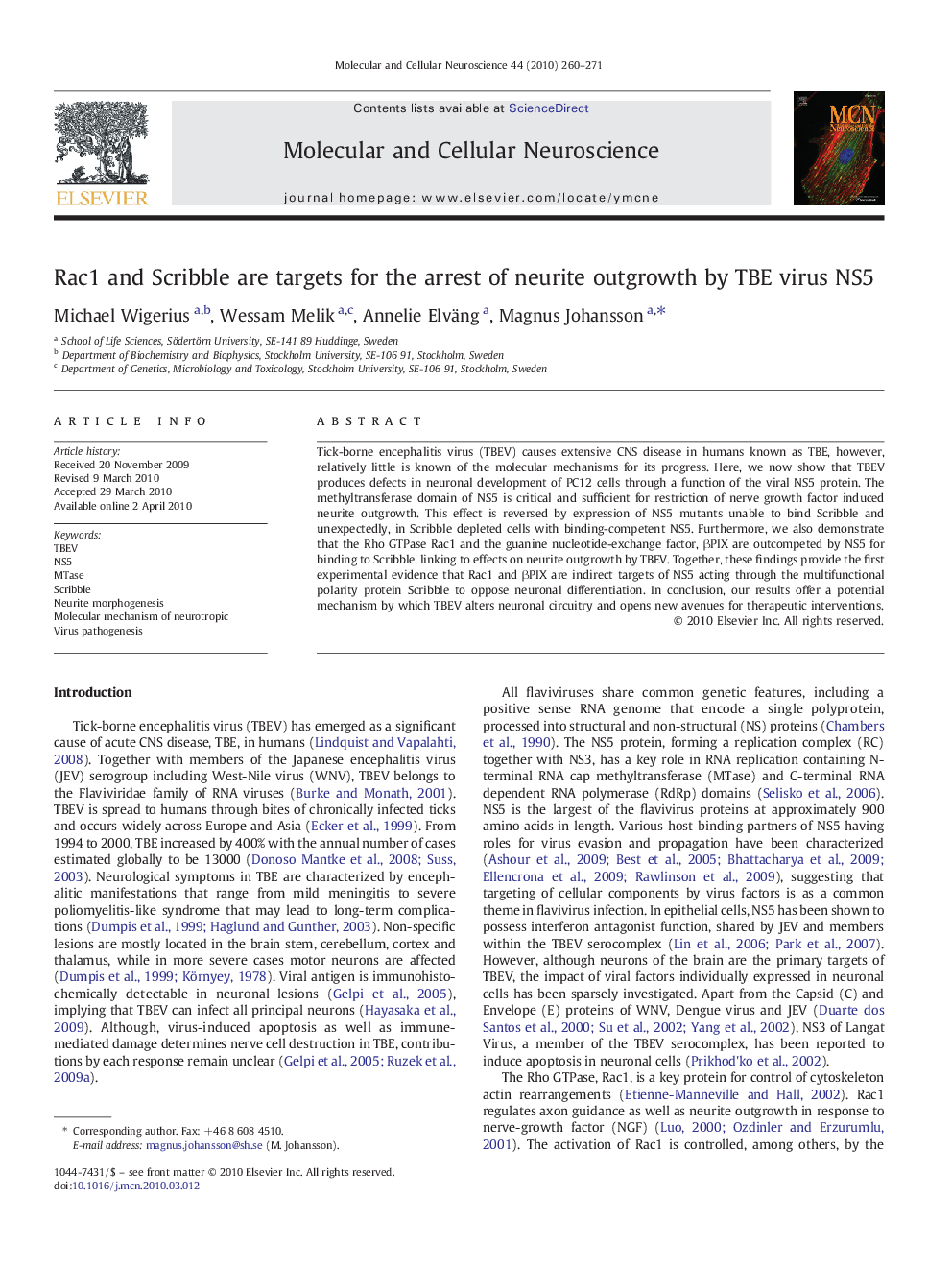| Article ID | Journal | Published Year | Pages | File Type |
|---|---|---|---|---|
| 10956704 | Molecular and Cellular Neuroscience | 2010 | 12 Pages |
Abstract
Tick-borne encephalitis virus (TBEV) causes extensive CNS disease in humans known as TBE, however, relatively little is known of the molecular mechanisms for its progress. Here, we now show that TBEV produces defects in neuronal development of PC12 cells through a function of the viral NS5 protein. The methyltransferase domain of NS5 is critical and sufficient for restriction of nerve growth factor induced neurite outgrowth. This effect is reversed by expression of NS5 mutants unable to bind Scribble and unexpectedly, in Scribble depleted cells with binding-competent NS5. Furthermore, we also demonstrate that the Rho GTPase Rac1 and the guanine nucleotide-exchange factor, βPIX are outcompeted by NS5 for binding to Scribble, linking to effects on neurite outgrowth by TBEV. Together, these findings provide the first experimental evidence that Rac1 and βPIX are indirect targets of NS5 acting through the multifunctional polarity protein Scribble to oppose neuronal differentiation. In conclusion, our results offer a potential mechanism by which TBEV alters neuronal circuitry and opens new avenues for therapeutic interventions.
Related Topics
Life Sciences
Biochemistry, Genetics and Molecular Biology
Cell Biology
Authors
Michael Wigerius, Wessam Melik, Annelie Elväng, Magnus Johansson,
